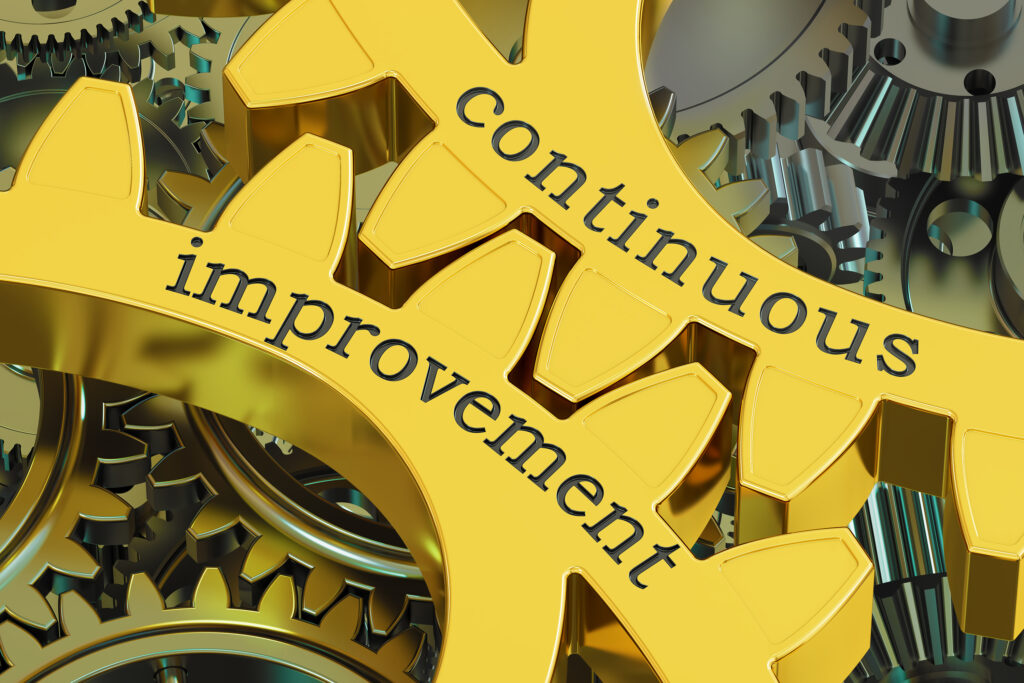
Strive for capital efficiency with advanced manufacturing dollars
By Hugh Alley
Digital Transformation In-Depth Innovation & Technology Sustainability Aerospace Automotive Electronics Energy Resource Sector Transportation actual performance Address constraints advanced manufacturing Advanced manufacturing technology Best Practices capital efficiency Editor Pick Improve physical flow Reduce reworkWhat do companies such as 3M, ABB, and Pepsico, have in common? All are involved in driving innovation and advanced technology, either as an inventor or user. What stands out is that they are all highly capital efficient.

Photo: AlexLMX /iStock / Getty Images Plus/Getty Images
Investors look for companies that are capital efficient. They love when they find companies that regularly generate free cash flow because the underlying business doesn’t need a lot of capital to grow. To achieve that year after year, companies constantly seek better ways to deliver their products and services. Sometimes that involves advanced technology, and other times it doesn’t. To be capital efficient, you need to be able to discern which is appropriate.
Masaaki Imai, who was influential in developing the concept of continuous improvement, made the case that when seeking improvement, the correct sequence of effort should be:
• Reduce rework;
• Address constraints (bottlenecks) in production;
• Provide better information to the floor;
• Improve physical flow, and,
• Add new technology.
Advanced manufacturing technology is not a good way to solve the problem of rework and is rarely required to resolve constraints. If rework and constraints are not addressed first, investments in information systems, flow and new technology will be wasted.
As an example, at one plant the constraint was the plasma cutter. When the team tracked actual performance, they found the plasma table was idle over half the time. The operators didn’t realize their first priority should be table changes. Once they understood that, the constraint at the plasma table disappeared, even as the plant doubled production. Faster, more accurate plasma cutters were available but they wouldn’t have solved the problem.
In a similar example, a powder coater could not keep up with demand, and asked what capital would be necessary to double production. Instead, over five months, through coaching, the manager implemented several changes in their internal processes. The result was clear work priorities for each member of the team. As a consequence, production doubled with no capital investment. The company could have spent tens of thousands of dollars on additional technology to increase capacity, but as the manager discovered, the capacity was already there. Advanced technologies would not have overcome the organizational issues that limited their production.
Executives often hope that new software will improve the information available where work is done. Most MRP and ERP packages claim to provide more and better data to the shop floor. However, in most cases, work teams will do better with manual boards that they update themselves. Manual boards have two great advantages. They are more flexible than software; it’s easy to make immediate changes to the metrics to support the current needs of the continuous improvement efforts. Software packages rarely have that flexibility. Second, when the teams manage their production boards themselves, rather than having the data mediated by another department, they tend to give it more attention.
Best practice for new software is to get the current systems working well, and then automate. Otherwise, the existing poor practices are automated, baking in inefficiencies. Putting in new and improved software will rarely, on its own, improve information to the plant floor. In one plant, the accounting side of the software worked fine, but the reports needed by operations were missing. It took a day of analytical work to get the production volume for any one part, which limited the team’s ability to make good production decisions. It was new, advanced technology, but it didn’t advance the work.

Photo: metamorworks/iStock / Getty Images Plus/Getty Images
New technology comes into its own when it enables a step change in the process, allowing the company to do truly new things, or when it permits an operator to manage more operations.
For example, autonomation (also described as intelligent automation) is designed to stop machines when an abnormal situation arises. This frees up operators to run several machines at once, because they don’t need to be concerned about whether or not each machine is running correctly. This approach is often inexpensive, and highly capital efficient.
Adding new technology should be done with caution. First, the complexity is often underestimated. I have seen $500,000 CNC machines being used as if they were $30,000 manual machines because the company could not get past the complexity of the machine. This is not capital efficient. The other reason for caution is that advanced technologies are more prone to downtime.
The key to making good investments in new technology is to be brutally honest in your assessment of current practices. In general, the current operations have much more capacity that is realized. Challenge all assumptions. If you are told that a machine is at capacity, ask how they know. Insist on seeing data about downtime, idle time, and scrap rates. Learn what speeds the machines are running at, their rated speeds, and the obstacles that are preventing operators from using the full capabilities of the machines. Understand the planned cycle time, and find out what has been done to reduce it. Get data about the work balance along the production process. Learn what improvements have been tried, and insist on seeing how those efforts were measured.
In most cases, four months of focusing on achieving operational performance improvements will show you whether there is a need for new technology. In over 20 improvement projects over the past five years, each one has shown significant gains in that period. Doubling production with the same assets or halving lead time are common outcomes from these efforts.
If, after all that, there is still not enough capacity, or if the technology allows you to carry out processes that you do not have the capability to do now, then, and only then is it worth exploring the benefits of advanced technology.
When a company works that way, it will become very capital efficient. It will also, inevitably, increase labour productivity. The result will be better service to customers, and, incidentally, better profits.
________________
Hugh Alley, P.Eng. is the president of First Line Training Inc. and provides core skill training for front-line leaders and coaching for senior managers to develop skills in methodical, systematic thinking and continuous improvement. He is the author of Becoming the Supervisor: Achieving Your Company’s Mission and Building Your Team. He is based in Burnaby, British Columbia.
